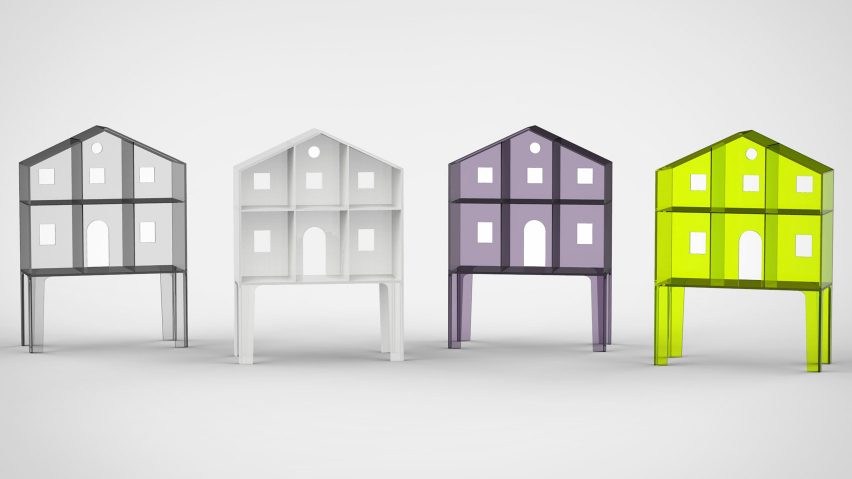The latest addition to Kartell's children's range is a set of candy-coloured plastic doll's houses created by Italian designer Fabio Novembre.
Featuring a pitched roof and cut-out windows and front door, the toys were based on Novembre's own experiences with his two daughters.
"Playing with architecture to give a house to their dolls is something that I've been doing for years," he told Dezeen.
The houses – which are raised off the ground on legs – are intended to appeal to design-savvy adults as well as children, and come in a range of colours including luminous green and pink.
The compartments created for each of the houses' rooms doubles as shelving, with room for owners to store books and small objects.
"We're talking about an iconic form, understandable for everyone, especially for children," he added. "The real novelty here is transparency. Kartell transforms your objects into light happy ghosts - never bulky and always friendly."
The Villa range is part of the company's Kartell Kids line, which was launched in 2016 for younger design connoisseurs. The range utilises the brand's signature plastic moulding technology, with debut pieces created by several leading designers.
Philippe Starck created a swing suspended from bright orange ropes, while Japanese studio Nendo designed a minimal rocking horse based on the shapes of I-beams used in construction.
Kartell launched Novembre's doll's houses at Milan design week, alongside a table created by Tokujin Yoshioka, which also forms part of the Kartell Kids range.
The brand certainly isn't the first to realise the potential market for children's furniture. Swiss studio Big-Game designed a chair that can be adjusted as kids grow – a similar concept to that explored by Dutch brand Teehee, which also created furniture that can change as children's height changes.
Also launched at this year's Milan design week was a range of surreal rugs created by Jaime Hayón, and a collection of brightly coloured woven furniture by fashion label Marni.

